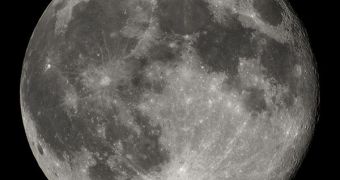Experts announce that one of the most likely reasons for which the Moon contains such large amounts of water and ice is that comets slammed into its surface billions of years ago. This allowed the chemical to accumulate, and get stored at the most suitable locations on the lunar surface.
According to the new data, it would seem that this cometary bombardment stage of the Moon's evolution took place after the space body was solidified from the ball of molten lava that was formed when Earth got impacted by a Mars-size object.
One of the main arguments to support the new hypothesis is the fact that the water experts discovered in the rock samples brought back by the NASA Apollo missions was entirely different from the one that can be found here, on Earth.
On the other hand, its main characteristics were nearly the same as those of water-ice discovered on three separate comets, the investigators explain. The team that conducted the work is based at the Wesleyan University in Middletown, Connecticut.
“If comets delivered the majority of water to the Moon, an inescapable result is that the Earth also received a large cometary input to its oceans,” explains study leader James Greenwood.
The expert holds an appointment as a professor in the Wesleyan University Department of Earth and Environmental Sciences, and he used samples from the Apollo 11, 12, 14, and 17 missions to arrive at the new conclusion.
“This may end up solving one of the great questions of our field, namely the origins of the Earth's oceans,” he adds. This theory supports, and is supported in return, by several new ideas about how Earth's final growth spurt occurred.
The research group details its discovery in the January 9 online issue of the top journal Nature Geoscience, where Greenwood explains that the deuterium to tritium isotopic ratios found in lunar water are only characteristic to comets and a few meteorites.
“The values of deuterium/hydrogen (D/H) that we measure in apatite in the Apollo rock samples is clearly distinguishable from water from the Earth, mitigating against this being some sort of contamination on Earth,” the expert adds.
“We have just scratched the surface here, and there are many more moon rocks to study as a result of the Apollo program,” Greenwood explains, quoted by Space.
“We don't know why the Earth's oceans have an elevated D/H relative to the Earth's mantle water. A significant cometary input would explain it,” the scientist concludes.

 14 DAY TRIAL //
14 DAY TRIAL //